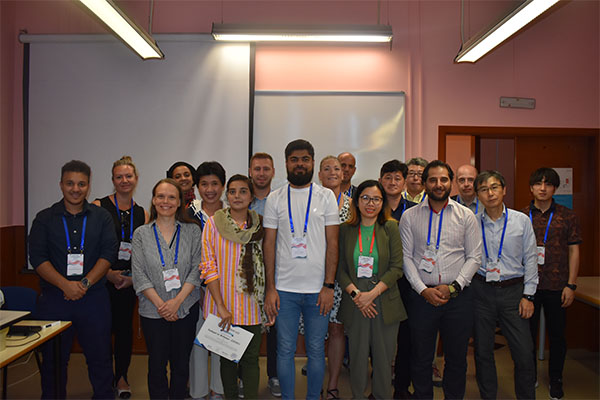Crafting an Effective Abstract for EI Conference Papers
The abstract is a critical part of any EI conference paper. As the first section reviewers and readers encounter, it must concisely summarize your research while highlighting its significance. A well-crafted abstract increases the chances of acceptance and ensures your paper stands out in conference proceedings. This guide will help you create an effective abstract that adheres to EI standards.

1. Understand the Purpose of an Abstract
The abstract serves as a summary of your research and a gateway to your paper. It should:
- Summarize Key Points: Provide an overview of the problem, methodology, results, and conclusions.
- Highlight Significance: Emphasize the importance and relevance of your research.
- Attract Attention: Capture the interest of reviewers and readers.
- Facilitate Discoverability: Use relevant keywords to improve indexing and searchability.
A clear and concise abstract helps your paper stand out in a competitive EI conference submission process.
2. Follow the Standard Abstract Structure
Most EI conferences prefer a structured abstract with the following components:
- Background/Problem Statement: Briefly describe the research problem and its importance.
- Objective: State the main goal or research question your paper addresses.
- Methods: Summarize the approach or techniques used in your study.
- Results: Highlight key findings or outcomes of your research.
- Conclusion/Impact: Conclude with the implications of your findings and their relevance to the field.
Ensure each section is covered in a single paragraph for a cohesive and concise abstract.
3. Adhere to Conference Guidelines
Each EI conference may have specific abstract requirements. Common guidelines include:
- Word Limit: Abstracts are typically 150–250 words. Stay within the specified range.
- Formatting: Use plain text without special formatting like bold, italics, or underlining unless specified.
- Language: Write in clear, formal English. Avoid jargon or overly technical terms that may confuse non-specialist reviewers.
- Keywords: Include 3–5 keywords related to your research to improve indexing and searchability.
Failing to follow these guidelines may lead to automatic rejection during the submission process.
4. Tips for Writing a Compelling Abstract
To ensure your abstract is effective:
- Be Specific: Avoid vague statements and focus on concrete details of your research.
- Focus on Novelty: Highlight what makes your work original or unique.
- Avoid Lengthy Backgrounds: Provide just enough context to set up the problem.
- Write for Your Audience: Tailor your abstract to the interests and expertise of the conference reviewers and attendees.
- Use Active Voice: Write clearly and concisely to make your abstract engaging and easy to understand.
An engaging abstract increases the likelihood of acceptance and interest in your paper.
5. Common Abstract Writing Mistakes to Avoid
Avoid these common pitfalls:
- Exceeding the Word Limit: Edit ruthlessly to stay within the specified word count.
- Overloading with Technical Terms: Keep your language accessible to a broad academic audience.
- Skipping Results: Include key findings to provide a complete picture of your research.
- Using Generic Statements: Avoid clichés like “This study is important because…” Focus on specifics.
- Ignoring Conference Guidelines: Failing to adhere to formatting or structural rules can result in rejection.
Paying attention to detail ensures your abstract meets both technical and academic standards.
6. Examples of Strong Abstracts
Example 1:
Title: Optimizing Energy Efficiency in Wireless Sensor Networks Using AI
Abstract: Wireless sensor networks (WSNs) are critical in modern IoT applications, but energy efficiency remains a significant challenge. This study presents a novel AI-driven optimization algorithm designed to minimize energy consumption while maintaining data accuracy. The proposed method leverages machine learning to predict network loads and optimize routing paths dynamically. Simulation results demonstrate a 25% improvement in energy efficiency compared to traditional methods. These findings highlight the potential of AI in enhancing WSN performance, paving the way for more sustainable IoT solutions.
Example 2:
Title: Advanced Materials for Next-Generation Solar Cells
Abstract: Developing high-efficiency, cost-effective solar cells is crucial for renewable energy adoption. This research explores a new class of perovskite-based materials, focusing on their unique electronic and optical properties. By combining experimental analysis with computational modeling, we identify key factors influencing efficiency and stability. Results indicate a 20% increase in power conversion efficiency and improved material longevity. These advancements underscore the promise of perovskites for next-generation solar energy technologies.
7. Checklist for Abstract Submission
Before submitting your abstract, review the following:
- Length: Does it meet the word limit?
- Relevance: Does it align with the conference theme?
- Clarity: Is it easy to read and free of jargon?
- Completeness: Does it cover all essential components (background, methods, results, conclusion)?
- Keywords: Are relevant keywords included?
- Guidelines: Does it adhere to the conference’s specific requirements?
A thorough review ensures your abstract is polished and ready for submission.
Conclusion
Writing an effective abstract for an EI conference paper is an essential skill for researchers. By following a structured approach, adhering to conference guidelines, and emphasizing the significance of your research, you can create an abstract that captures attention and increases the likelihood of acceptance.
For more tips and resources on writing abstracts and preparing EI conference papers, visit academic.net.
Call to Action
Ready to submit your paper to an EI-indexed conference? Start with a strong abstract! Visit academic.net for expert advice and resources on academic publishing.
